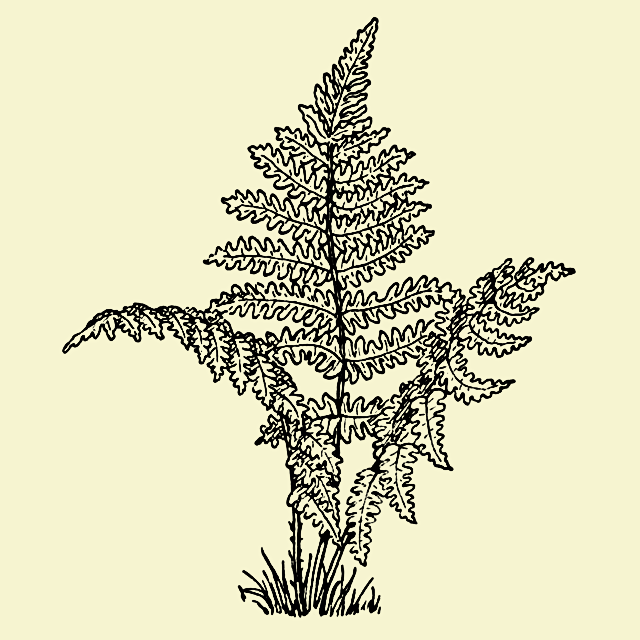For some time I had been wanting to learn more about ferns, so I took advantage of a workshop on fern identification being held at the Wahkeena Nature Preserve in Fairfield County, Ohio. Wahkeena is a great place to learn about ferns since 29 species of fern grow there (Wahkeena’s official blog publishes a list of their local fern species). Naturalist Tom Shisler led the workshop which is called Focus on Ferns. In this post I’m going to introduce you to a number of common ferns found in Ohio by summarizing Tom’s presentation. Fern Terminology Prior to taking the workshop at Wahkeena I had photographed a number of beautiful ferns thinking that I would be able to identify them later via the photo. However after taking the workshop I came to the conclusion that I’m not going to be able to identify many of these because I didn’t gather enough data in my photographs. When attempting to identify a fern, its important to look closely at one of the fronds, to turn it over and look at its underside for reproductive structures, and also to examine the frond’s stalk making note of its color and texture. I’m going to make observations about a species key characteristics as I describe the ferns below, but to make the descriptions easier to follow, I’ll start by introducing a few technical terms. The frond of a fern consists of a stalk with a green, leaf-like growth emerging from it. Usually the leaf-like material of a frond is sub-divided into multiple leaf-like growths. When the blade is divided in this way, each division is called a pinna (pronounced “PIN-nuh”; the plural is pinnae, pronounced “PIN-knee”). Some pinnae are further divided into pinnules. In some cases the pinnules are further divided into lobes. The more that the leaf-like material is divided, the more feathery or lacy the frond looks. Fronds that are divided again and again are said to be finely-cut. Unlike flowering plants, ferns reproduce via spores instead of seeds. An individual spore is so tiny that it is invisible to the naked eye. However the spores are housed in visible structures while they are developing. These structures are known as sori (pronounced “SORE-eye”; the singular is sorus, pronounced “SORE-us”). The sori grow on the underside of a frond. Observing the location and appearance of these sori is a big help in identifying the fern’s species. In some species each individual sorus is easily seen (check out the photo above), but in other species the presence of sori just seems to change the color, texture and shape of the frond. Some ferns species produce mostly sterile fronds (without sori), while also producing one or more fertile fronds (with sori). Other ferns consist entirely of fertile fronds. And in some fern species, the sori only emerge from some of the pinnae, while they are absent from the rest of the pinnae. Examining the stalk of a frond can also be a help in identifying the fern … Continue reading Basic Fern Identification
